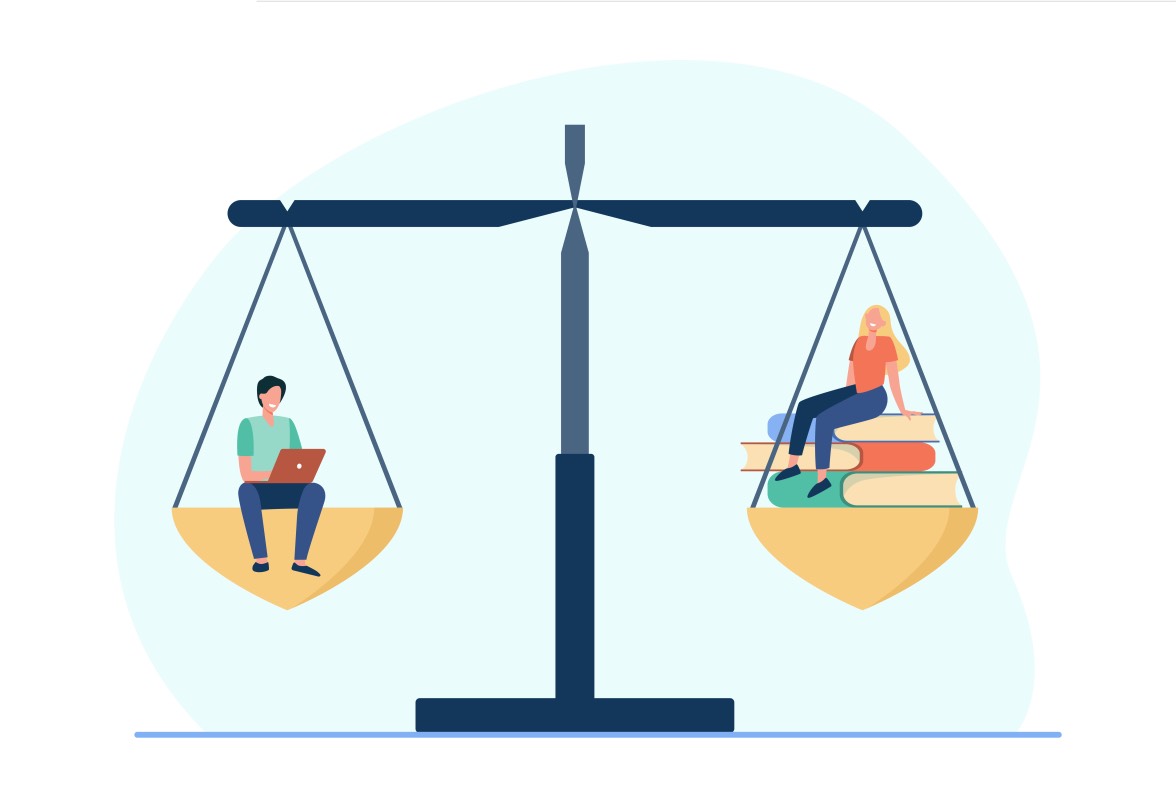When doing SEO, you need to balance on-page elements and off-page factors. Technical SEO and user experience (UX) are also crucial for success.
Achieving optimal SEO performance demands harmonizing multiple aspects of a website and its broader internet presence. It’s about intertwining the mechanical precision of on-page optimizations—like keyword usage and meta tags—with the influence of off-page elements, which encompass backlinks and social signals.
The technical side of SEO ensures that a site is accessible and understandable to search engine algorithms, focusing on site speed, mobile-responsiveness, and structured data. Meanwhile, prioritizing the user experience is essential; a site must not only attract visitors but retain their attention with valuable content and an intuitive layout. These key ingredients work in concert to create a strong SEO foundation, guiding search engines and users alike to view the site as authoritative, engaging, and worthy of a high ranking amidst online competition.

Credit: www.growth-hackers.net
Seo Fundamentals And Balancing Acts
Achieving top search engine rankings involves a delicate balance. SEO experts focus on both visibility and usability. This means your site should be easy to find and easy to use. Good SEO isn’t just about drawing people to your site. Once they’re there, they should find what they need quickly.
A website’s SEO strategy must balance on-page elements with off-page factors. On-page SEO includes optimizing content, titles, and images. Off-page SEO covers backlinks and social signals. Both are vital for success.
You must make your content appealing to both users and search engines. This dual approach makes sure your site is loved by visitors and search algorithms.
Keyword Optimization Strategies
Finding the right balance in keyword usage is essential for effective SEO. You need to mix both long-tail and short-tail keywords in your content. Long-tail keywords tend to be more specific and less competitive, which can help you reach a targeted audience. Short-tail keywords are broader, often driving higher volumes of traffic, but with more competition. A blend of these ensures you don’t miss out on potential visibility.
| Keyword Type | Pros | Cons |
|---|---|---|
| Long-Tail Keywords | Specific, less competition | Lower search volumes |
| Short-Tail Keywords | High traffic potential | Highly competitive |
Using a variety of keywords will help your site rank for different searches. It’s a game of balance to ensure your content is easily discovered by your audience.
Quality Content Vs. Quantity
Quality content is vital for SEO success. It must offer value to the reader and be relevant to their search. Crafting content that stands out can lead to higher engagement rates and improved rankings. Keep paragraphs focused and information rich.
Consistency is also key in publishing content. It signals to search engines that your website is a reliable source of information. An ongoing flow of content can boost website visibility and authority. Yet, ensure each piece maintains the highest quality.
| Content Quality | Consistency |
|---|---|
| Engaging and meaningful to users | Regular posting schedule |
| Valuable and informative | Steady content improves rankings |

Credit: www.growth-hackers.net
User Experience (ux) And Technical Seo
Site Speed is crucial for both user satisfaction and SEO. A fast-loading page keeps visitors happy. Google rewards swift sites with higher rankings. It’s key to balance the use of high-quality images and interactive features with minimal load times.
Audit your site’s performance regularly using tools like Google’s PageSpeed Insights. Compress images, leverage browser caching, and minimize HTTP requests to enhance load times. Such optimizations serve dual purposes: they please your visitors and improve your site’s SEO profile.
Concerning Mobile Optimization, it’s essential for reaching wider audiences. Most internet users are on mobile devices. Google uses mobile-first indexing. This means your site must look good and work well on phones and tablets.
Responsive design is non-negotiable. It adjusts your site to any screen size. Test your site on various devices to ensure it’s user-friendly. A mobile-friendly site invites more traffic and signals to search engines that your content provides a positive user experience.
Link-building Practices
Creating a natural link profile is crucial for SEO success. Too many aggressive linking tactics can lead to penalties. Diversity in link types and sources helps in maintaining a healthy link ecosystem. Think quality over quantity. A mix of reputable external links and solid internal linking strategies can boost site authority.
Engaging content encourages organic link growth. Good links should make sense in the content. They must be relevant. Internal linking helps users and search engines navigate. It also spreads link equity across your pages. Aim for a balance to avoid being seen as manipulative by search engines.
Local Seo And Broad Seo
Targeting local searches is essential for businesses with a physical presence. Creating geo-specific content can drastically increase local traffic. But this might narrow the global reach. Versatility in SEO strategy is key to balancing local appeal with a broader audience.
Your website needs a mix of content to attract customers from various regions. Localized pages are critical for nearby users. Yet, these should not overshadow your global relevance. The goal is to keep your brand universally appealing, while also being a local authority.
Seo Tools And Manual Efforts
SEO tools and manual efforts form a dynamic duo for website success. It’s essential to know when to automate with cutting-edge software. Keyword research, tracking rankings, and analyzing backlinks are perfect for automation. SEO tools save time and provide large data sets quickly.
Yet, don’t disregard the power of human insight. Creative content creation and engaging user experiences need a personal touch. It’s about finding the right mix. AI can suggest optimizations, but a person should make final decisions. Quality and context matter in SEO, and that’s where humans excel.
Adapting To Algorithm Changes
Search engine updates can shift the SEO landscape overnight. Successful webmasters remain nimble, adapting their strategies to maintain high rankings. A balance between long-term SEO planning and responsive quick fixes is crucial.
Building a solid foundation with quality content and strong backlinks ensures durability. Yet, being able to implement rapid changes in tactics ensures you won’t fall behind. This dual approach hedges against unpredictable algorithm shifts.
For instance, a table summarizing this might look like this:
| Long-Term Strategies | Quick Fixes |
|---|---|
| Create evergreen content | Optimize for trending keywords |
| Build a robust backlink profile | Update tags and content swiftly |
| Focus on user experience | Adjust to SERP changes |
This balance promotes stability and the ability to react swiftly to change.
Balancing Seo With Other Marketing Efforts
SEO should work hand-in-hand with a wider marketing plan. To be effective, SEO can’t stand alone. It should merge seamlessly with other elements. These elements include social media, content creation, and advertising campaigns.
For social media’s role in SEO, consistency is key. Ensure brand messaging aligns across all platforms. Use the same keywords and phrases that your website targets. This creates synergy between social media and search engine visibility.
Sharing content through social channels increases online presence. It also helps in getting valuable backlinks to your website. Consider creating shareable content that resonates with your followers. Engagement on social media can improve rankings indirectly.

Credit: www.linkedin.com
Frequently Asked Questions On What Do You Need To Balance When Doing Seo?
What Is Seo Balance?
SEO balance refers to the equilibrium between various optimization aspects. It’s crucial in achieving a well-rounded, effective SEO strategy. This includes harmonizing technical SEO, content quality, user experience, mobile-friendliness, and link building.
Why Is Technical Seo Important?
Technical SEO lays the foundation for search engines to crawl and index a website effectively. It involves optimizing site speed, security, and structure to enhance both user experience and search visibility.
How Does Content Quality Affect Seo?
Content quality directly impacts user engagement and search rankings. Search engines favor informative, valuable, and unique content that satisfies user intent. High-quality content leads to better user signals and higher search visibility.
What Role Does User Experience Play In Seo?
User experience (UX) is integral to SEO as it affects bounce rates and dwell times. Sites with intuitive navigation, fast load speeds, and mobile responsiveness tend to rank higher, as they provide a better experience for visitors.
Conclusion
Balancing SEO effectively demands attention to multiple factors. Content quality, user experience, and technical optimizations must harmonize. Prioritize ongoing learning and adapt to algorithm changes. Your SEO journey thrives on this equilibrium, ensuring both search engines and users are satisfied.
Embrace this balance for online success.




